Prices in AUD. Shipping worldwide. Flat rate $8 postage per order within Australia. International by weight calculated at checkout. Read full terms.
-
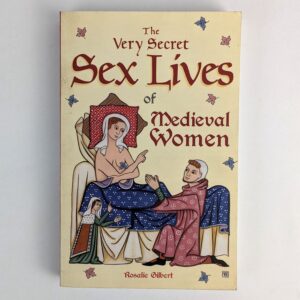
The Very Secret Sex Lives of Medieval Women
AU$20.00 Read MoreAdd to cartRosalie Gilbert
Coral Gables: Mango Publishing Group, 2020.“An inside look at sexual practices in medieval England. Were medieval women slaves to their husband’s desires, jealously secured in a chastity belt in his absence? Was sex a duty or could it be a pleasure? Did a woman have a say about her own female sexuality, body, and who did or didn’t get up close and personal with it? No. And yes. It’s complicated. Romance, courtship, and behind closed doors. The intimate lives of medieval women were as complex as for modern woman. They loved and lost, hoped and schemed, were lifted up and cast down. They were hopeful and lovelorn. Some had it forced upon them, others made aphrodisiacs and dressed for success. Some were chaste and some were lusty. Having sex was complicated. Not having sex, was even more so.” (publisher’s blurb)
-
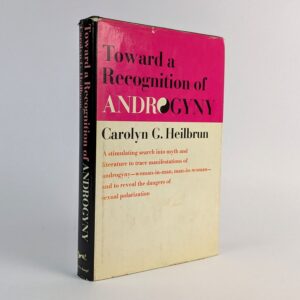
Toward a Recognition of Androgyny
AU$40.00 Read MoreAdd to cartCarolyn G. Heilbrun
New York: Alfred A. Knopf, 1973.A stimulating search into myth and literature to trace manifestations of androgyny–woman-in-man, man-in-woman–and to reveal the dangers of sexual polarization.
-
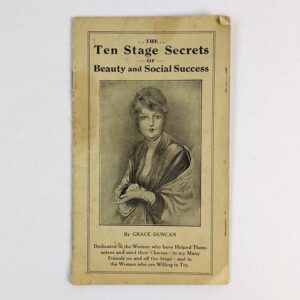
The Ten Stage Secrets of Beauty and Social Success
AU$150.00 Read MoreAdd to cartGrace Duncan
Sydney: H. H. Watson Printing Co., No date.Dedicated to the Women who have Helped Themselves and used their Charms – to my Many Friends on and off the Stage – and to the Women who are Willing to Try. Grace Duncan of 178 Castlereagh Street, Sydney, a former actress turned business woman writes on the beauty and understanding pertaining to actresses before providing further guidance to the domestic woman and how to harness the power of attraction through the power of the mind, wardrobe, grace, bust, hair, and body. Many recipes are provided for the creation of shampoos, moisturisers, and lotions. Undated, Duncan’s acting resume is not widely noted, however her advertisements for obtaining the most remarkable complexion treatment ever known appeared in Australian and New Zealand newspapers between 1916-1918. 1 copy recorded in OCLC at Monash, however a likely near identical (and equally scarce with 1 holding at Southern Methodist University, Dallas) publication was marketed in the United States from 1913 attributed to Pearl LaSage of Chicago and in 1920 in Montreal.
-
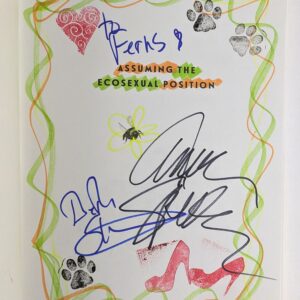
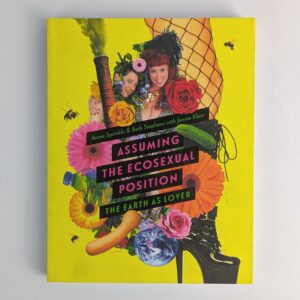
Assuming the Ecosexual Position: The Earth as Lover
AU$80.00 Read MoreAdd to cartAnnie Sprinkle; Beth Stephens; Jennie Klein
Minneapolis: University of Minnesota Press, 2021.“In 2008, Sprinkle and Stephens married the Earth, which set them on the path to explore the realms of ecosexuality as they became lovers with the Earth and made their mutual pleasure an embodied expression of passion for the environment. Ever since, they have been not just pushing but obliterating the boundaries circumscribing biology and ecology, creating ecosexual art in their performance of an environmentalism that is feminist, queer, sensual, sexual, posthuman, materialist, exuberant, and steeped in humor.” (publishers blurb) This copy inscribed Sprinkle and Stephens with scribble drawings and stamps.
-
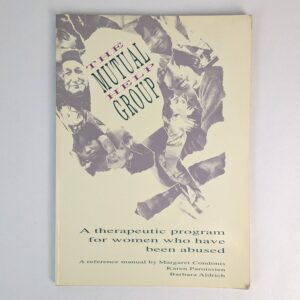
The Mutual Help Group: A Therapeutic Program for Women Who Have Been Abused
AU$40.00 Read MoreAdd to cartMargaret Condonis; Karen Paroissien; Barbara Aldrich
Sydney: Redfern Legal Centre Publishing, 1990. -
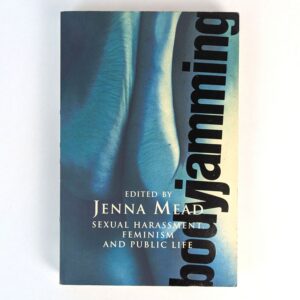
Bodyjamming
AU$50.00 Read MoreAdd to cartJenna Mead
Sydney: Vintage, 1997.Sexual harassment, feminism, and public life. Contributions by Alice Blake, Rosi Braidotti, Kaz Cooke, Ann Curthoys, Mark Davis, Judy Horacek, Foong Ling Kong, Amanda Lohrey, Jenna Mead, Jenny Morgan, Meaghan Morris, Elspeth Probyn, Matthew Ricketson, Natasha Stott Despoja, and XX (Ormond College Complainant). Edited by Jenna Mead.
-

In and Out of Enchantment: Blood Symbolism and Gender in Portuguese Fairytales
AU$60.00 Read MoreAdd to cartIsabel Cardigos
Helskinki: Suomalainen Tiedeakatemia, 1996.The core of fairytales is the realm of enchantment. This study argues that the bloodshed associated with menstruation, defloration and childbirth–natural episodes in the lifecycle of women–is central to a syntax of enchantment and disenchantment that is common to all fairytales. It is a reflection on the gendered voices that have generated and contributed to the structure and symbolism of fairytales; and it takes shape along with the discussion of Portuguese versions of wide-spread tale types like AT303 (The Two Brothers), AT313 (The Girl as Helper in the Hero’s Flight and AT516 (Faithful John), as well as through an intriguing ecotype of Snake Helper tales (AT533*), ‘The Little Snake’. FF Communications No. 260 published by the Finnish Academy of Science and Letters.
-

The Tales of the Ploughwoman
AU$40.00 Read MoreAdd to cartMarisa Rey-Henningsen
Helskinki: Suomalainen Tiedeakatemia, 1996.Appendix to FFC 254. FF Communications No. 259 published by the Finnish Academy of Science and Letters.
-
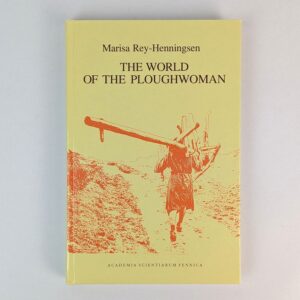
The World of the Ploughwoman: Folklore and Reality in Matriarchal Northwest Spain
AU$60.00 Read MoreAdd to cartMarisa Rey-Henningsen
Helskinki: Suomalainen Tiedeakatemia, 1993.This study is a contribution to the discussion of folklore as a mirror of society. Spanish Galicia offers a special opportunity for examining wellknown folktales in a different context because of the cultural and economic dominance of women and the matriarchal life style which characterized the region until recently. That matriarchy was deeprooted in Galicia and did not result from male migration in modern times, is demonstrated in the historical chapters of the book, while the anthropological chapters (on family systems, work patterns, matriarchal ideology, sexual behaviour, religion and magic) tend to show that all aspects of Galician culture have been “canonized” in folklore; folklore therefore must have gone through radical changes in order to conform with the local ideology. While the women in Galician folktales almost always appear in active and aggressive hero roles, this has nothing to do with “wishful thinking” or “poetic fiction”, for according to the matriarchal concept it is just the natural order of things. Surely the correlation demonstrated here between the social structure, gender roles, and ideology may also be observed in male-dominated societies, once we learn to disengage from the patriarchal concept of the “natural order of things”. FF Communications No. 254 published by the Finnish Academy of Science and Letters.
-
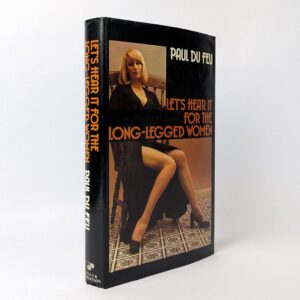
Let’s Hear It for the Long-Legged Women
AU$150.00 Read MoreAdd to cartPaul du Feu
Sydney: Angus & Robertson, 1974.Erotic memoir by the husband of feminist writer Germaine Greer. He later married poet Maya Angelou.
-
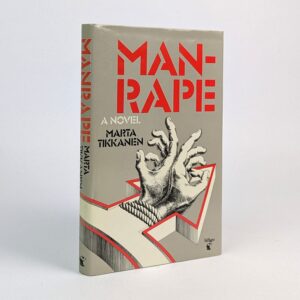
Manrape
AU$100.00 Read MoreAdd to cartMarta Tikkanen
London: Virago, 1978.Translated from the Swedish ‘Man kan inte valdtas’ by Alison Weir. The first English edition released alongside the 1978 film ‘Men Can’t Be Raped’. “On her fortieth birthday Eva Randers, library assistant, divorced, living alone, is asked to dance by Marty Wester at a local disco. After a few drinks they go back to his flat, where he proceeds to tie her up, pour liquor over her, and rape her. .. She’s stunned, humiliated, frightened, confused. She doesn’t report it to the police. And she can’t and won’t forget it. Stubbornly and obsessionally she makes her plan to alert the world to her experience…” (from jacket flap)
-
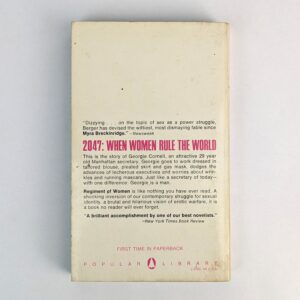
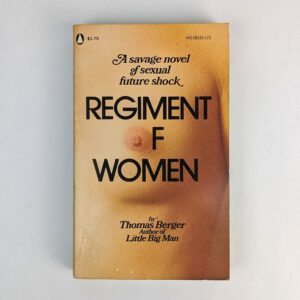
Regiment of Women
AU$20.00 Read MoreAdd to cartThomas Berger
Toronto: Popular Library, 1973.Gender role-reversal dystopian novel. 2047: When Women Rule the World. “Women rule supreme. Dressed in business suits and stick-on beards, they attack the weaker sex with dildos. To propagate the species, men are drafted into State controlled sperm farms. And rebels of the underground Men’s Liberation face the penalty of castration.”
-
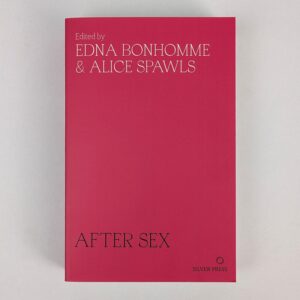
After Sex
AU$35.00 Read MoreAdd to cartEdna Bonhomme; Alice Spawls
London: Silver Press, 2023.“The last decade has seen a rise in activism and arguments over women’s reproductive freedom reminiscent of the 1960s and 1970s. This title provides personal and political perspectives from the mid-twentieth century to the present day, setting feminist classics alongside contemporary accounts and highlighting the experiences of women of colour and working-class women. Contributors include Nell Dunn, Anne Enright, bell hooks, Ursula K. Le Guin, Audre Lorde and Sally Rooney. These essays, short stories and poems trace past understandings of reproductive freedom and consider what it might look like in future, making urgent connections between womens equality and access to contraception, healthcare and childcare. The writers pay special attention to people — both fictional and real — who have sought control over their sexual lives, and the joy, comedy, difficulties and disappointments that entails. But above all, After Sex testifies to the power of great writing to show us why that freedom is worth pursuing — without shame and without apology.” (publisher’s blurb)
-


Ah! Nana (Complete Set, 9 Issues)
AU$1,200.00 Read MoreAdd to cartJanic Guillerez; Marjorie Alessandrini; Anne Delobel; et al.
Paris: Les Humanoides Associes, 1976-1978.Complete set of the French women’s comic magazine Ah ! Nana which evolved out of and was published by the comic book publishing house of Moebius (Jean Giraud), Jean-Pierre Dionnet, Philippe Druillet, and Bernard Farkas, Les Humanoides Associes. During a staff lunch of their magazine Metal Hurlant (the original of the English adaptation Heavy Metal), Jean-Pierre suggested to the women present (including his wife Janic Guillerez who became chief editor of Ah! Nana) to create a women’s magazine and feminist newspaper. Ah!Nana ran for nine issues, each with its own theme, coming to a short end following the magazine being banned to minors after the publication of the eighth issue devoted to homosexuality. This led the editorial team to go all in on the ninth and final issue, devoting it to incest, leading to the French censorship Commission banning the publication, labelling it pornographic.
-
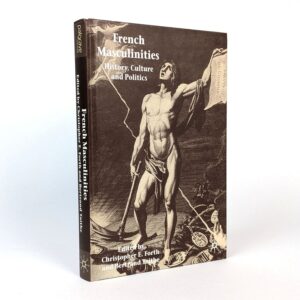
French Masculinities: History, Culture and Politics
AU$100.00 Read MoreAdd to cartChristopher E. Forth; Bertrand Taithe
Basingstoke and New York: Palgrave Macmillan, 2007.This copy inscribed by Christopher Forth
-
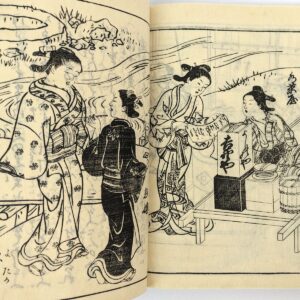
![Hyakunin Joro Shinasadame [One Hundred Women Classified According to Their Rank]](https://www.thebookmerchantjenkins.com/wp-content/uploads/0033662-300x300.jpg)
Hyakunin Joro Shinasadame [One Hundred Women Classified According to Their Rank]
AU$600.00 Read MoreAdd to cartNishikawa Sukenobu
Kyoto: Unsodo, No date.One of the masterpieces of Ukiyoe art. Depicts women from various social classes of the Edo period, from court and samurai ladies to geisha and sex workers, and the many town and country women in between. Originally published in 2 volumes in 1723 and here reprinted together in 1 volume circa late 19th/early 20th century.
-
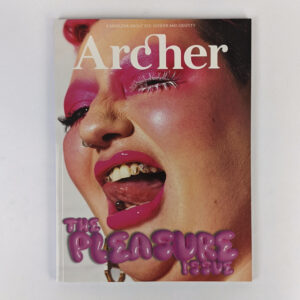
Archer Magazine 19: The Pleasure Issue
AU$19.00 Read MoreAdd to cartAmy Middleton; Roz Bellamy
Melbourne: Archer Magazine, 2023.A magazine about sex, gender and identity. The Pleasure Issue. Contributors include: Joan Nestle, Katia Ariel, Erin Riley, Caitlin McGregor, Lauren French, Vex Ashley, Hini Hanara, Bebe Oliver, Patrice Capogreco, Euphemia Russell, Jessamyn Stanley, Pro Dommes Alani and Danielle, and an image editorial by Hailey Moroney.
-
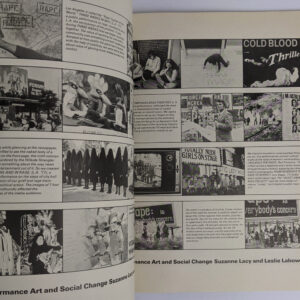
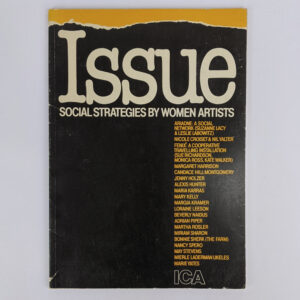
Issue: Social Strategies by Women Artists
AU$400.00 Read MoreAdd to cartLucy R. Lippard
London: Institute of Contemporary Arts, 1980.Catalogue for an influential feminist art exhibition, including the works of Jenny Holzer, Suzanne Lacy, Leslie Labowitz, Nicole Croiset, Nil Yalter, Sue Richardson, Monica Ross, Kate Walker, Margaret Harrison, Candace Hill-Montgomery, Alexis Hunter, Maria Karras, Mary Kelly, Margia Kramer, Loraine Leeson, Beverly Naidus, Adrian Piper, Martha Rosler, Miriam Sharon, Bonnie Sherk (the Farm), Nancy Spero, May Stevens, Mierle Laderman Ukeles, and Marie Yates.
-

Pleasure Erased: The Clitoris Unthought
AU$20.00 Read MoreAdd to cartCatherine Malabou
Cambridge: Polity, 2022.“The clitoris was absent in anatomy books, in paintings and sculptures, absent in spirit and even body; it has long been the organ of erased pleasure. We assume that this oversight has been repaired in our times: today, the clitoris is not forgotten but honoured. Conferences, books, manifestos, works of art are all devoted to it. The autonomy of clitoral jouissance is recognized. The boundaries of feminism have also moved: queer, intersex and trans approaches claim that the clitoris is perhaps no longer the exclusive preserve of the woman. And yet, there remains a wounded space. Because genital mutilation is still common practice. Because millions of women are still denied pleasure. The clitoris continues to mark the enigmatic space of the feminine. Constrained by the extreme difficulty and the extreme urgency of returning to this scorched earth, it is time to give voice to an organ of pleasure which has still not become an organ of thought.” (publisher’s blurb) Translated from the French by Carolyn Shread.
-
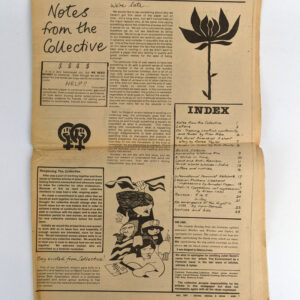
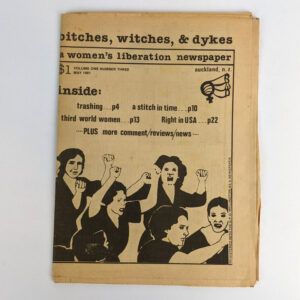
Bitches, Witches, & Dykes (Volume 1, Number 3)
AU$45.00 Read MoreAdd to cartFeminist Publications Collective
Auckland: Feminist Publications Collective, 1981.A Women’s Liberation Newspaper published in Auckland, New Zealand.
